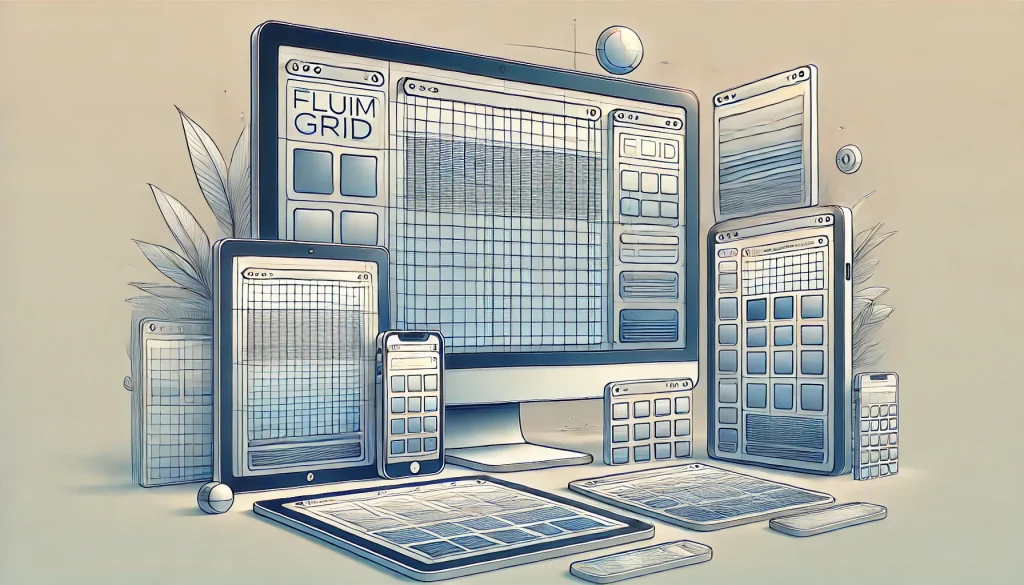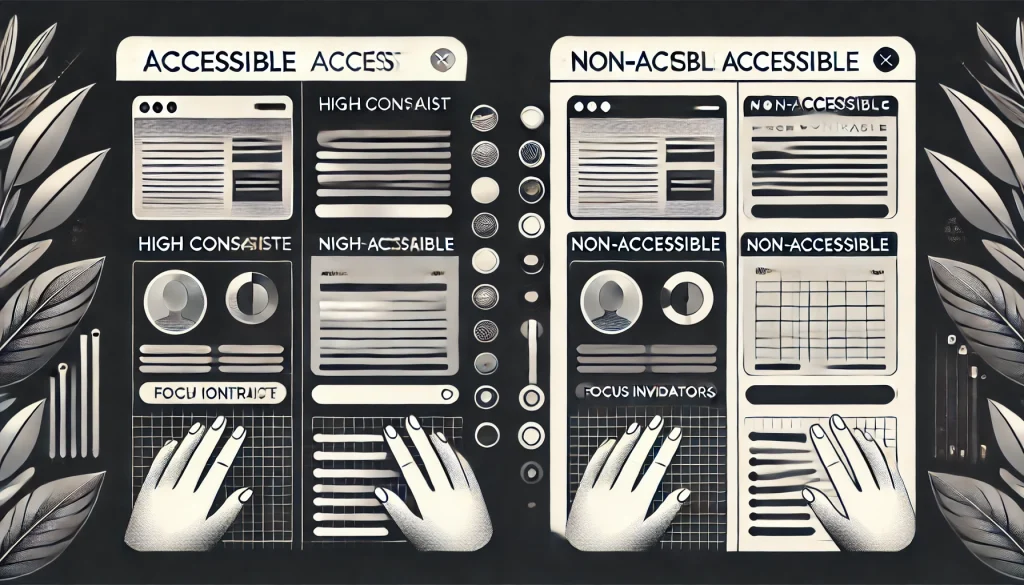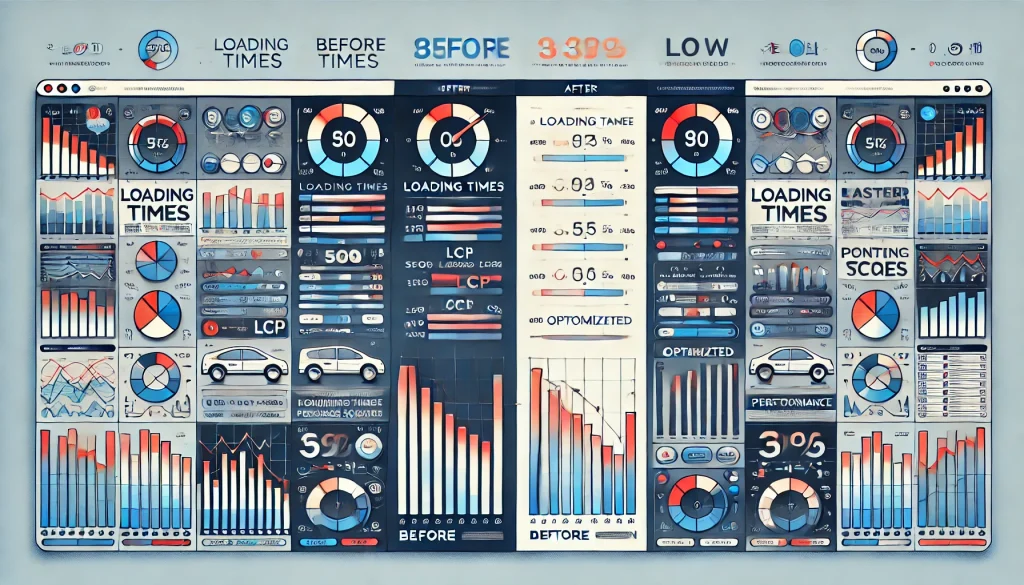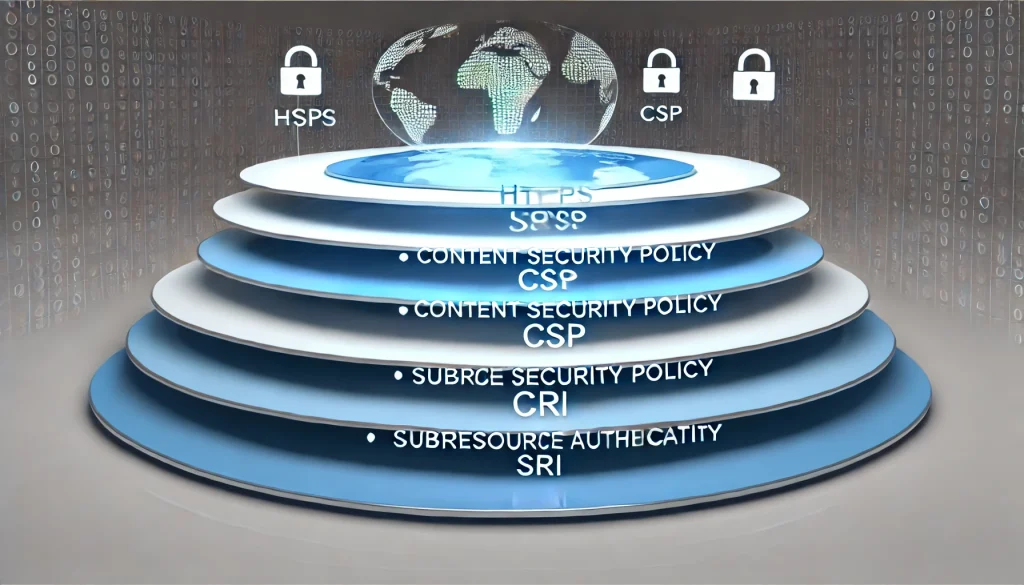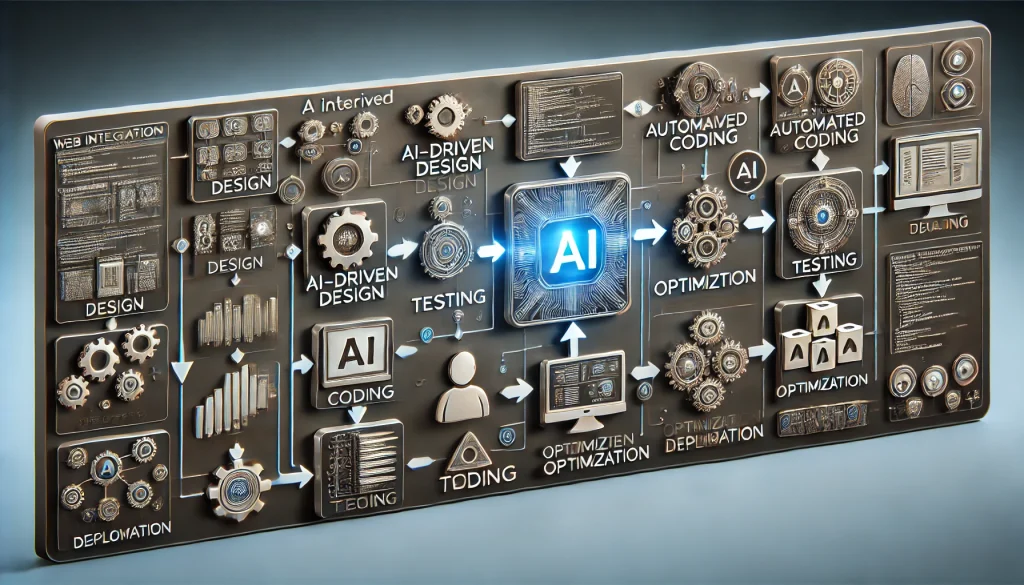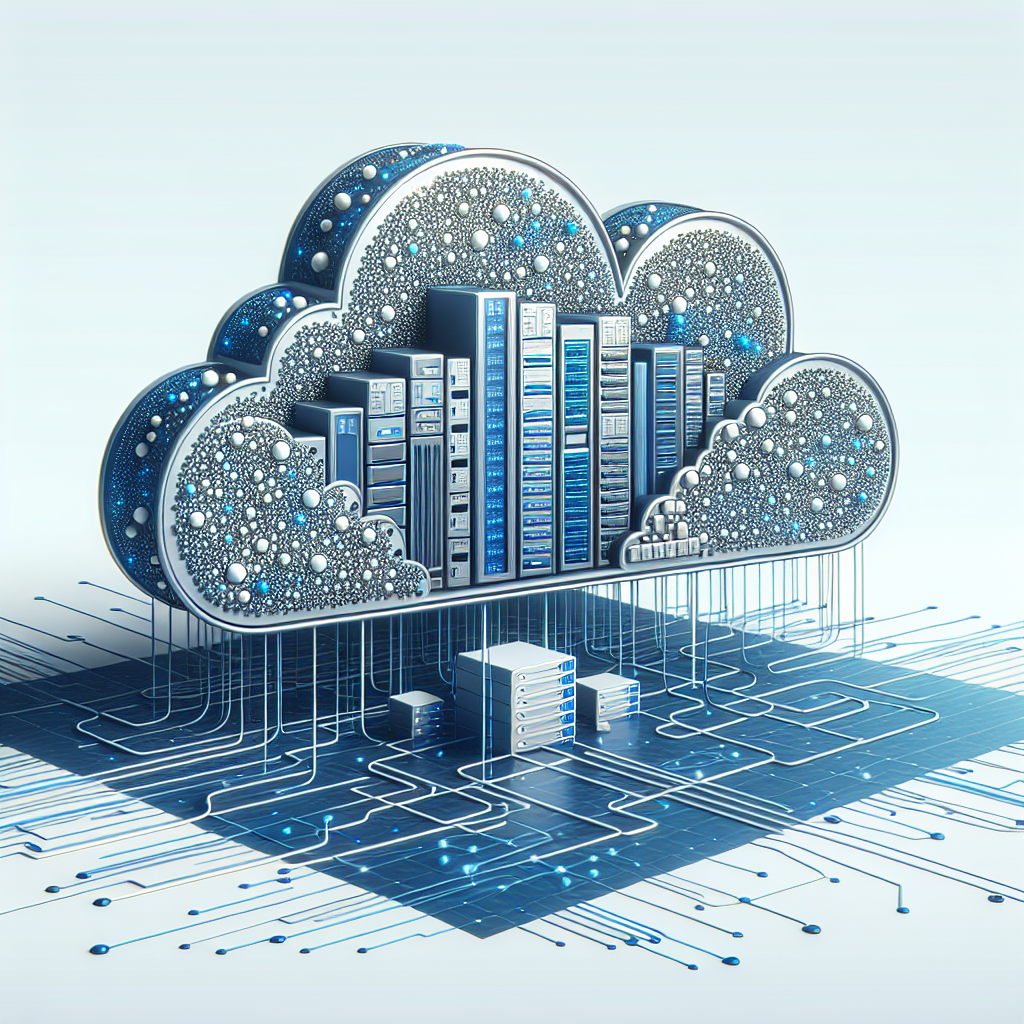
by Guru IS | Dec 17, 2024 | Website Design, Website Development
The advent of Artificial Intelligence (AI) has significantly transformed various industries, and web development is no exception. In recent years, AI has been increasingly integrated into web development processes, bringing about a revolution that enhances both efficiency and user experience. By automating design and testing, AI not only saves time but also ensures a higher level of precision and performance in web applications.
AI-powered tools can now generate design elements, layouts, and even entire web pages with minimal human intervention. These tools analyze user behavior, preferences, and industry trends to create visually appealing and highly functional websites. This capability is a game-changer for businesses looking to establish a strong online presence quickly and efficiently.
Moreover, AI-driven testing tools have revolutionized the way websites are tested for functionality, security, and performance. Automated testing identifies bugs and vulnerabilities faster and more accurately than traditional manual testing methods. This ensures that any issues are addressed promptly, leading to a more reliable and secure website.
For businesses aiming to leverage the power of AI in their web development projects, now is the perfect time to act. The benefits of AI-driven design and testing are clear: faster development cycles, improved user experience, and enhanced security. Get a quote at https://guru-is.com/#contact to see how our innovative web design solutions can empower your business.
Benefits of AI in Automated Design

Incorporating AI into automated design brings a multitude of benefits that are transforming how websites are created and maintained. One of the primary advantages is the significant reduction in time required to design and develop a website. AI algorithms can quickly generate design elements, themes, and even entire web layouts based on predefined parameters and user preferences. This capability allows designers to focus more on creative aspects and less on repetitive tasks.
Another key benefit is the enhanced personalization that AI offers. By analyzing vast amounts of data, AI can tailor design elements to match the specific needs and preferences of individual users. This level of customization results in a more engaging and relevant user experience, which can lead to higher customer satisfaction and increased conversion rates.
AI also improves the overall quality and consistency of web designs. Machine learning algorithms can identify and correct design inconsistencies, ensure brand adherence, and maintain a cohesive look and feel across different pages and devices. This results in a polished and professional website that enhances brand credibility and user trust.
Furthermore, AI-driven design tools can adapt to changing trends and technologies more swiftly than traditional methods. This agility ensures that websites remain up-to-date and competitive in a rapidly evolving digital landscape.
Overall, the benefits of AI in automated design are clear. Faster development times, personalized user experiences, improved quality, and adaptability make AI an indispensable tool for modern web development.
AI-Powered Design Tools and Techniques

The advent of AI-powered design tools and techniques has revolutionized the landscape of web development. These tools leverage the power of artificial intelligence to automate and enhance various aspects of the design process, making it more efficient and innovative.
One prominent example is AI-based design generators. These tools can create entire web templates and layouts by analyzing existing designs and user preferences. They offer a range of customization options, enabling designers to tweak elements to fit their brand identity while saving substantial time and effort.
Another groundbreaking technology is machine learning algorithms that facilitate intelligent design suggestions. By understanding user behavior and preferences, these algorithms can recommend optimal color schemes, typography, and layout structures to enhance user experience. This ensures that the final design is not only aesthetically pleasing but also functionally effective.
Moreover, AI-powered design tools often include features like auto-layout adjustments. These features dynamically adjust design elements to fit various screen sizes and resolutions, ensuring a seamless user experience across devices. This is particularly crucial in an era where mobile and tablet usage is skyrocketing.
Additionally, natural language processing (NLP) is being integrated into design tools to streamline content creation. For instance, AI can generate text suggestions or even entire paragraphs based on the context, maintaining a consistent tone and style throughout the website.
These advanced tools and techniques are not just limited to design but extend to testing and optimization. AI can conduct A/B tests, analyze user interactions, and provide insights for continuous improvement. By doing so, it ensures that the website remains user-friendly and effective in achieving its goals.
In essence, AI-powered design tools and techniques are paving the way for a new era in web development, where creativity meets automation for unparalleled results.
Automated Testing with AI Integration

Incorporating automated testing with AI integration into web development processes is transforming how developers ensure the quality and performance of their websites. AI-driven automated testing tools bring efficiency, accuracy, and scalability to the table, making it easier to deliver robust and error-free web applications.
One of the primary benefits of AI in automated testing is its ability to perform continuous testing. Unlike traditional methods, AI-powered tools can execute tests continuously throughout the development lifecycle. This means that any issues or bugs can be identified and addressed in real-time, significantly reducing the time and cost associated with manual testing.
Moreover, AI-driven testing tools utilize machine learning algorithms to predict potential failure points and areas that require rigorous testing. By analyzing historical data and patterns, these tools can prioritize test cases and focus on the most critical aspects of the application. This predictive capability ensures that the testing process is both comprehensive and efficient.
Another notable application of AI in automated testing is visual testing. AI algorithms can detect visual discrepancies in the user interface, such as misaligned elements, incorrect colors, or missing components. This level of precision is challenging to achieve with manual testing and ensures a consistent user experience across different browsers and devices.
AI-powered testing tools also facilitate self-healing test scripts. Traditional test scripts often break when there are changes in the code or UI. However, AI algorithms can adapt to these changes by automatically updating the test scripts, thereby minimizing maintenance efforts and ensuring continuous test execution.
Furthermore, AI integration in testing tools enhances performance testing. AI can simulate various user scenarios and load conditions to assess the website’s performance under different circumstances. This helps in identifying bottlenecks and optimizing performance to deliver a smooth and responsive user experience.
In conclusion, automated testing with AI integration is a game-changer in web development. By leveraging AI’s capabilities, businesses can achieve higher quality standards, faster release cycles, and ultimately, a superior user experience.
Case Studies of AI in Web Development
Exploring case studies of AI in web development provides valuable insights into how AI technologies are being successfully implemented to revolutionize the industry. These real-world examples highlight the transformative impact of AI on design efficiency, testing accuracy, and overall user experience.
One notable case study involves a leading e-commerce platform that integrated AI-driven design tools to streamline its website creation process. By leveraging AI algorithms, the platform was able to generate visually appealing and responsive web pages automatically. This not only reduced the time and resources required for manual design but also ensured a consistent and professional look across the site. The result was a 30% increase in user engagement and a significant boost in conversion rates.
Another compelling example is a financial services company that utilized AI-powered automated testing to enhance the reliability of its web applications. The AI tools enabled continuous testing and real-time bug detection, allowing the company to identify and fix issues promptly. This proactive approach led to a 40% reduction in post-release defects and improved customer satisfaction due to a smoother user experience.
In the realm of content management, a media organization employed AI-based content recommendation systems to personalize its website for individual users. By analyzing user behavior and preferences, the AI system delivered tailored content suggestions, resulting in a more engaging and relevant user experience. This personalization strategy increased average session duration by 25% and significantly reduced bounce rates.
Additionally, a travel industry player adopted AI-driven chatbots to enhance customer service on its website. These chatbots, powered by natural language processing and machine learning, provided instant and accurate responses to user inquiries. The implementation of AI chatbots not only improved customer support efficiency but also increased booking rates by 15% due to the seamless and interactive user interface.
These case studies demonstrate the diverse applications and significant benefits of AI in web development. From automated design and testing to personalized user experiences and enhanced customer service, AI technologies are enabling businesses to achieve new levels of efficiency and performance.
Future Trends in AI-Driven Web Development

As we look ahead, the future of AI-driven web development is brimming with exciting possibilities that promise to further revolutionize the industry. Emerging trends in AI are poised to make web development processes even more efficient, intuitive, and user-centric.
One of the most anticipated trends is the advancement of Generative AI. This technology will enable AI systems to create more complex and creative web designs from scratch, based on minimal user input. By understanding user preferences and business needs, generative AI can produce unique and innovative web layouts that stand out in a crowded digital landscape.
Another promising trend is the integration of AI with augmented reality (AR) and virtual reality (VR). This combination will allow for the creation of immersive and interactive web experiences. Websites can be transformed into virtual environments where users can navigate and interact with content in a more engaging manner. This convergence of technologies is expected to redefine how users experience the web.
Moreover, the rise of AI-powered voice interfaces is set to change the way users interact with websites. With the increasing popularity of voice-activated assistants like Alexa and Siri, integrating voice search and commands into web design will become a standard practice. This will make websites more accessible and user-friendly, catering to a broader audience.
In addition, the use of AI for advanced data analytics will enable web developers to gain deeper insights into user behavior and preferences. By analyzing vast amounts of data, AI can provide actionable recommendations for optimizing website performance, improving user engagement, and driving conversions.
Finally, ethical AI is gaining attention as a crucial trend. As AI becomes more integrated into web development, ensuring that these technologies are transparent, fair, and unbiased will be paramount. Developers will need to prioritize ethical considerations to build trust with users and comply with evolving regulations.
At Guru Internet Services, we are committed to staying at the forefront of these trends and leveraging the latest AI technologies to deliver exceptional web development solutions. Empower your business with cutting-edge web design and development. Get a quote at https://guru-is.com/#contact and join us in embracing the future of AI-driven web development!

by Guru IS | Aug 20, 2024 | Website Design, Website Development
Introduction
The web design and development landscape has seen tremendous advancements in recent years. As businesses and individuals increasingly rely on digital platforms, the demand for high-quality, accessible, and responsive websites has never been higher. In 2024, the latest standards are reshaping how developers and designers approach their projects, ensuring that websites not only look great but also perform optimally across all devices and platforms.
In this comprehensive article, we’ll delve into the cutting-edge web design and development standards that are defining the industry this year. Whether you’re a seasoned developer or just starting, understanding these standards will keep your skills sharp and your projects ahead of the curve.
1. Responsive Design: Beyond Mobile-First
Responsive design has been a standard for years, but in 2024, it’s not just about mobile-first—it’s about user-first. The emphasis has shifted towards creating seamless experiences across an even broader range of devices, from smartwatches to 8K TVs. The key is fluid grids, flexible images, and media queries that adapt to any screen size.

Learn more about the principles of user-first design.
2. Web Accessibility: Inclusive Design as a Necessity
Web accessibility is no longer a luxury; it’s a necessity. With over 15% of the world’s population experiencing some form of disability, ensuring that your website is accessible to everyone is crucial. The latest standards emphasize WCAG 2.2 compliance, which includes updates like focus visible, pointer target spacing, and better text alternatives.
Developers should incorporate ARIA landmarks, use semantic HTML, and ensure keyboard navigation works flawlessly. These practices not only improve accessibility but also enhance overall user experience, leading to better SEO and broader reach.

Discover the importance of web accessibility in modern design.
3. Performance Optimization: Speed as a Competitive Edge
In 2024, performance optimization is more critical than ever. With Google’s Core Web Vitals becoming a major ranking factor, developers must focus on reducing First Contentful Paint (FCP), Largest Contentful Paint (LCP), and Cumulative Layout Shift (CLS). This involves techniques such as lazy loading, code splitting, and image optimization.
Adopting modern frameworks like Next.js or Svelte can also significantly enhance performance by reducing unnecessary JavaScript and providing server-side rendering (SSR).
Check out our in-depth guide to performance optimization.
4. Progressive Web Apps (PWAs): The Future of Web Development
Progressive Web Apps (PWAs) continue to gain traction as they offer the best of both web and mobile apps. In 2024, the focus is on enhancing PWA capabilities with advanced service workers, WebAssembly, and Push Notifications API. PWAs provide an app-like experience, complete with offline access, but without the need for app store distribution.
This approach not only reduces development costs but also ensures that users always have the latest version of your app without manual updates.
Explore our article on building robust Progressive Web Apps.
5. Security: Protecting User Data in a Digital-First World
With cyber threats on the rise, web security standards are more stringent than ever. In 2024, developers must prioritize HTTPS, Content Security Policy (CSP), and Subresource Integrity (SRI). Additionally, two-factor authentication (2FA) and OAuth 2.0 are becoming essential for safeguarding user data.
It’s also vital to stay updated on the latest security patches and vulnerabilities in third-party libraries. Regular penetration testing and security audits should be part of your development cycle to ensure the highest level of protection..
Learn more about securing your website from modern threats.
6. AI and Automation: Streamlining Web Development
Artificial Intelligence (AI) and automation tools are revolutionizing web development. In 2024, AI-driven design tools can generate layouts, suggest color schemes, and even write code snippets. Automation tools like CI/CD pipelines and automated testing streamline development processes, reducing errors and improving efficiency.
These technologies are not just for large enterprises; even small teams can leverage AI and automation to enhance productivity and deliver high-quality products faster..
Dive into how AI is transforming web development.
7. Sustainability: Building a Greener Web
Sustainability is becoming a key consideration in web design and development. In 2024, there’s a growing focus on reducing carbon footprints by optimizing websites for lower energy consumption. Techniques include minimizing HTTP requests, optimizing server performance, and choosing green hosting providers.
This trend not only benefits the environment but also appeals to eco-conscious users and can even improve site performance.
Read about sustainable practices in web development.
Conclusion
Staying updated with the latest web design and development standards is crucial for delivering top-notch websites that meet user expectations and industry requirements. By embracing responsive design, prioritizing accessibility, optimizing performance, and leveraging modern technologies like PWAs and AI, developers can create digital experiences that stand out in 2024 and beyond.
For more insights and in-depth articles on web development, visit our blog at Guru Internet Services.

by Guru IS | Aug 20, 2024 | Hosting
In the ever-evolving landscape of web deployment, serverless architectures have emerged as a transformative force. Unlike traditional server-based models where businesses must manage and maintain physical or virtual servers, serverless architectures allow developers to focus purely on writing code. The cloud provider takes care of everything else, from scaling to managing runtime environments. This paradigm shift is not just a fleeting trend but a significant leap forward in how web applications are deployed and managed.
One of the most compelling benefits of serverless architectures is the promise of enhanced scalability. Applications can automatically scale in response to the number of incoming requests, ensuring optimal performance without manual intervention. Additionally, serverless models can lead to substantial cost savings, as businesses only pay for the actual compute time used, rather than pre-allocated server capacity. This pay-as-you-go model is particularly advantageous for startups and small businesses looking to optimize their budget.
Furthermore, serverless architectures simplify the development process. Developers can deploy individual functions or microservices, leading to faster release cycles and more agile development practices. This modular approach also makes it easier to isolate and resolve issues, enhancing overall application reliability.
If you’re looking to revolutionize your web deployment strategy, now is the time to explore serverless architectures. Get a quote at https://guru-is.com/#contact and let’s empower your business through innovative web design and development.
Benefits of Serverless Web Deployment

Adopting serverless web deployment brings an array of benefits that can significantly impact your business operations and development workflow. First and foremost, the cost-effectiveness of serverless architectures cannot be overstated. By eliminating the need for server management, you only pay for the actual compute resources consumed, enabling better budget allocation and reduced operational costs.
Another crucial benefit is the scalability serverless frameworks offer. Traditional servers often struggle with sudden spikes in traffic, but serverless architectures automatically scale in response to demand. This ensures that your application remains responsive and performs optimally, irrespective of the traffic load.
The time-to-market reduction is another significant advantage. Serverless architectures simplify deployment processes, allowing developers to focus on writing and deploying code without worrying about underlying infrastructure. This leads to faster iteration cycles and quicker feature rollouts, making your business more agile and competitive.
Furthermore, serverless architectures enhance reliability and security. By leveraging the infrastructure of cloud providers, you benefit from their robust security measures and high availability. This reduces the risk of downtime and security breaches, giving you peace of mind.
Lastly, the modular nature of serverless architectures promotes better code maintainability. Developers can write isolated functions or microservices, making it easier to update, debug, and scale individual components of your application. This modular approach leads to cleaner, more maintainable codebases, and ultimately, more stable applications.
Challenges of Adopting Serverless Models
While the benefits of serverless models are numerous, it’s essential to acknowledge the challenges that come with adopting this innovative approach. One of the primary concerns is the vendor lock-in. When you rely heavily on a specific cloud provider’s serverless services, migrating to another provider can become complex and costly, potentially limiting your flexibility.
Another significant challenge is the cold start latency. Serverless functions are often initialized on an as-needed basis, leading to a delay known as ‘cold start.’ This delay can impact the performance of your application, especially for latency-sensitive operations. While many cloud providers are working to minimize this, it remains a consideration.
Debugging and monitoring serverless applications can also be more complicated than traditional setups. The ephemeral nature of serverless functions makes it challenging to trace issues and gather performance metrics. Developers need to adopt new tools and methodologies to effectively monitor and debug these applications.
Cost management, while generally a benefit, can also be a challenge. The pay-per-use model requires careful monitoring to avoid unexpected costs, particularly for applications with high and unpredictable traffic. Without diligent cost tracking, the expenses can quickly add up, negating some of the financial advantages.
Lastly, there is the complexity of architectural design. Building a robust serverless application often involves breaking down monolithic applications into microservices, which can be a complex and time-consuming process. It requires a thorough understanding of both the application’s requirements and the serverless paradigm to design an efficient, scalable system.
Despite these challenges, with the right strategies and tools, many businesses find that the advantages of serverless architectures outweigh the potential downsides.
Key Technologies in Serverless Architectures

To fully leverage serverless architectures, understanding the key technologies that underpin this paradigm is essential. Function as a Service (FaaS) is at the core of serverless computing. Platforms like AWS Lambda, Google Cloud Functions, and Azure Functions allow developers to write and deploy code in response to events without worrying about the underlying infrastructure. This enables rapid development and scaling.
Another critical technology is API Gateway. Services like Amazon API Gateway and Azure API Management facilitate the creation, deployment, and management of APIs. These gateways handle requests, enforce security protocols, and manage traffic, ensuring seamless interaction between different components of a serverless application.
Storage solutions such as AWS S3, Google Cloud Storage, and Azure Blob Storage are also vital in serverless architectures. These services provide scalable, durable storage options that integrate seamlessly with serverless functions, allowing for efficient data management and retrieval.
Event streaming and messaging services, like Amazon Kinesis, Google Pub/Sub, and Azure Event Hubs, play a crucial role in serverless ecosystems. They enable real-time data processing and seamless communication between various application components, facilitating event-driven architectures.
Lastly, database services optimized for serverless environments, such as Amazon DynamoDB, Google Firestore, and Azure Cosmos DB, provide scalable, low-latency data storage solutions. These databases are designed to handle the dynamic workloads typical of serverless applications, ensuring reliable performance.
By integrating these key technologies, businesses can build robust, scalable, and efficient serverless applications that meet modern demands.
Best Practices for Serverless Deployment

Implementing serverless architectures can greatly enhance your web deployment strategy, but following best practices is crucial for achieving optimal results. One fundamental practice is to design for statelessness. Since serverless functions are ephemeral, they should not rely on local states. Instead, use external storage solutions like databases or object stores to maintain state information.
Another important practice is to optimize cold starts. Cold starts occur when a serverless function is invoked for the first time or after a period of inactivity, leading to initial latency. To mitigate this, consider using smaller, more efficient code and leveraging pre-warming techniques to keep functions ready for execution.
Monitoring and logging are indispensable in serverless environments. Utilize comprehensive monitoring tools like AWS CloudWatch, Google Stackdriver, or Azure Monitor to track performance metrics, error rates, and resource usage. Implement logging within your functions to facilitate debugging and performance tuning.
Security is paramount in serverless deployments. Follow the principle of least privilege by granting functions only the permissions they need. Use managed services for authentication and authorization, such as AWS IAM, Google Cloud IAM, or Azure AD, to ensure secure access control.
Cost optimization is another critical aspect. Serverless architectures can reduce costs significantly, but only if managed properly. Monitor usage patterns and set up budget alerts to avoid unexpected expenses. Optimize your code to reduce execution time and resource consumption, and take advantage of pricing tiers and reserved capacities where applicable.
By adhering to these best practices, you can maximize the benefits of serverless architectures, ensuring efficient, secure, and cost-effective web deployments.
Future Trends in Serverless Computing

Serverless computing is an ever-evolving landscape, and the future holds exciting trends that promise to further revolutionize web deployment. One prominent trend is the rise of multi-cloud and hybrid cloud deployments. Businesses are increasingly looking to avoid vendor lock-in by leveraging multiple cloud providers or integrating on-premises infrastructure with cloud solutions. This flexibility ensures higher availability and resilience.
Another significant trend is the advancement of edge computing. By processing data closer to the source, edge computing can drastically reduce latency and improve performance, particularly for applications requiring real-time processing. Serverless functions deployed at the edge can provide localized, rapid responses, enhancing user experience.
We are also witnessing the emergence of AI and machine learning integration in serverless environments. Cloud providers are offering more serverless solutions tailored for AI and ML workloads, enabling developers to build intelligent applications without managing underlying infrastructure. This trend is set to grow, making sophisticated AI capabilities more accessible.
Furthermore, there is a growing focus on developer experience and tooling. Enhanced development frameworks, improved debugging tools, and comprehensive CI/CD pipelines are making serverless development more streamlined and efficient. These advancements help developers deploy and iterate faster, ultimately accelerating time-to-market.
Lastly, serverless for complex workflows is gaining traction. Initially, serverless was ideal for simple, stateless functions, but now it’s being used for more complex, stateful workflows through orchestrators like AWS Step Functions and Azure Durable Functions. This trend allows for more sophisticated applications to be built using serverless paradigms.
Embracing these future trends will position businesses at the forefront of innovation, harnessing the full potential of serverless computing to drive success. Get a quote at https://guru-is.com/#contact to see how Guru Internet Services can help you stay ahead of the curve.

by Guru IS | Aug 20, 2024 | Website Design
The landscape of web accessibility is continuously evolving, driven by technological advancements and a growing recognition of the importance of inclusivity. Web accessibility standards are designed to ensure that websites can be used by everyone, including individuals with disabilities. These standards encompass a range of guidelines and practices aimed at eliminating barriers that might prevent access to digital content.
Web accessibility standards are primarily governed by the Web Content Accessibility Guidelines (WCAG), which provide a comprehensive framework for making web content more accessible. The WCAG is continuously updated to address emerging challenges and technological developments. This ensures that the guidelines remain relevant and effective in promoting digital inclusivity.
Adopting web accessibility standards is not only a legal requirement in many jurisdictions but also a moral imperative. By ensuring that your website is accessible, you are opening up your digital space to a wider audience, including people with disabilities, the elderly, and those with temporary impairments. This inclusivity can significantly enhance your brand reputation and customer loyalty.
At Guru Internet Services, we specialize in designing and developing websites that comply with the latest web accessibility standards. Our goal is to empower businesses by creating visually stunning and user-friendly websites that drive real business success. Ready to make your website accessible to all? Get a quote at https://guru-is.com/#contact and revolutionize your digital presence with us today!
Emerging Technologies in Accessibility

The future of web accessibility standards is being significantly shaped by emerging technologies that promise to enhance the digital experience for all users. Several groundbreaking technologies are revolutionizing the way web content is accessed and interacted with, making it more inclusive for people with disabilities.
Artificial Intelligence (AI) and machine learning are at the forefront of these advancements. AI-driven tools can automatically generate alt text for images, transcribe audio content, and even translate sign language in real time. These innovations are making it easier for web developers to create accessible content without extensive manual intervention.
Another promising technology is voice recognition. As voice-activated devices and virtual assistants like Siri, Alexa, and Google Assistant become more prevalent, voice recognition is becoming a critical component of web accessibility. This technology enables users with mobility impairments to navigate websites, perform searches, and interact with digital content using voice commands.
Additionally, Virtual Reality (VR) and Augmented Reality (AR) are opening new avenues for creating immersive and accessible web experiences. These technologies can provide alternative ways to present information, making it easier for users with visual or cognitive impairments to understand and interact with web content.
Finally, the development of accessible design tools is simplifying the process of creating inclusive websites. Tools like accessibility checkers and automated testing platforms help developers identify and resolve accessibility issues early in the design process, ensuring compliance with web accessibility standards.
As these technologies continue to evolve, they will play a pivotal role in shaping the future of web accessibility standards, making the web a more inclusive space for everyone.
Regulatory Changes on the Horizon

As the importance of web accessibility continues to gain recognition, regulatory changes are on the horizon that will significantly impact how businesses approach their online presence. Governments and international bodies are increasingly advocating for stricter and more comprehensive accessibility standards to ensure that digital content is accessible to all users, regardless of their disabilities.
The Web Content Accessibility Guidelines (WCAG) set by the World Wide Web Consortium (W3C) have long been the gold standard for web accessibility. However, we can expect these guidelines to evolve and become more rigorous. The upcoming version, WCAG 2.2, introduces new success criteria focusing on user needs, such as enhanced focus indicators and improved readability.
In addition to WCAG, other regulatory frameworks are being updated. For instance, the European Accessibility Act aims to harmonize accessibility requirements across Europe, setting a unified standard for web accessibility. This act will require businesses to ensure their websites and mobile applications are accessible to people with disabilities by a specified deadline, or face substantial penalties.
In the United States, the Americans with Disabilities Act (ADA) is being interpreted more broadly to include web accessibility. Recent court rulings have reinforced the need for businesses to make their digital content accessible, prompting many to proactively adopt WCAG standards to mitigate legal risks.
Australia, Canada, and other nations are also updating their accessibility regulations, emphasizing the global shift towards more inclusive digital experiences. These regulatory changes are not just about compliance but also about embracing the social responsibility of making the web accessible to everyone.
Staying ahead of these regulatory changes is crucial for businesses aiming for long-term success. Proactively adapting to new standards will not only help avoid legal complications but also enhance the user experience for a broader audience.
Best Practices for Future-Proofing

In an ever-evolving digital landscape, future-proofing your website for accessibility is essential. Adopting best practices now will ensure your site remains compliant, user-friendly, and adaptable to emerging technologies and standards.
First and foremost, adhere to the latest Web Content Accessibility Guidelines (WCAG). Ensure your website meets at least WCAG 2.1 Level AA standards, and keep an eye on forthcoming updates like WCAG 2.2 and the eventual WCAG 3.0. These updates are designed to address more nuanced accessibility needs and provide a more inclusive user experience.
Another crucial best practice is to implement a robust testing regimen. Regularly test your website using both automated tools and manual testing methods. Automated tools like WAVE or AXE can quickly identify common issues, while manual testing with assistive technologies like screen readers will ensure a more comprehensive evaluation. Additionally, consider user testing with individuals who have disabilities to gain real-world insights.
Design with flexibility in mind by adopting responsive design principles. Ensure your website is accessible on various devices, including desktops, tablets, and mobile phones. This approach not only enhances accessibility but also improves overall user satisfaction.
Incorporate semantic HTML to improve the way assistive technologies interact with your website. Use proper HTML tags for headings, lists, and tables to provide a logical structure that screen readers can easily navigate. Enhanced semantic markup also benefits search engine optimization (SEO), making your content more discoverable.
Additionally, provide alternative text for all images, captions for videos, and transcripts for audio content. These alternatives are crucial for users who rely on screen readers and those with hearing impairments.
Finally, stay informed about the latest trends and advancements in web accessibility. Join accessibility-focused forums, follow thought leaders, and participate in relevant webinars and conferences. Continuous learning will empower you to adapt your website to meet the evolving needs of all users.
Impact of AI on Accessibility
The integration of artificial intelligence (AI) in web development is revolutionizing the way we approach accessibility, making it more intuitive and efficient. AI technologies are poised to significantly enhance the user experience for individuals with disabilities by automating and personalizing accessibility features.
One of the most promising applications of AI in accessibility is automatic image recognition. Tools like Google’s Cloud Vision and Microsoft’s Azure Cognitive Services can generate accurate alternative text for images, making visual content more accessible to users with visual impairments. These AI-driven descriptions ensure that all users can understand the context and content of images, even if they cannot see them.
Another innovative use of AI is in the area of real-time transcription and captioning. AI-powered services such as Google’s Live Transcribe and Otter.ai can convert spoken language into written text with high accuracy. These tools are invaluable for users who are deaf or hard of hearing, providing them with real-time access to audio content in a readable format.
AI also plays a crucial role in personalization. Machine learning algorithms can analyze user behavior and preferences to tailor the accessibility features of a website to individual needs. For example, AI can adjust font sizes, contrast levels, and navigation options based on a user’s specific requirements, delivering a more personalized and accessible experience.
Furthermore, AI-driven chatbots and virtual assistants are enhancing website accessibility by offering voice-activated navigation and support. These tools can help users with mobility impairments or those who find traditional input methods challenging, providing a more seamless and intuitive way to interact with digital content.
Finally, AI can assist in accessibility compliance by identifying and flagging potential issues during the development process. AI-powered tools can scan code and content to ensure they meet accessibility standards, reducing the likelihood of non-compliance and improving the overall quality of the website.
As AI technology continues to advance, its impact on web accessibility will only grow, making the digital world more inclusive and navigable for everyone.
Trends Shaping Web Accessibility

As we look to the future of web accessibility standards, several key trends are emerging that promise to shape the landscape of inclusive digital experiences. Staying abreast of these trends is crucial for businesses aiming to provide accessible and user-friendly websites.
One significant trend is the increased focus on mobile accessibility. With the proliferation of smartphones and tablets, ensuring that websites are accessible on mobile devices is more important than ever. Responsive design and mobile-first approaches are becoming standard practices, enabling users with disabilities to access content seamlessly across different devices.
Another trend is the growing adoption of voice user interfaces (VUIs). Technologies like Amazon’s Alexa, Apple’s Siri, and Google Assistant are transforming how users interact with digital content. VUIs offer a hands-free way to navigate websites, which is especially beneficial for individuals with mobility impairments or those who find traditional input methods challenging.
The integration of virtual reality (VR) and augmented reality (AR) in web experiences is also gaining traction. These technologies can create immersive and engaging experiences for users, but they also present new challenges for accessibility. Ensuring that VR and AR content is accessible involves developing guidelines and tools that cater to users with disabilities, such as providing alternative text for visual elements and incorporating audio descriptions.
Legislation and regulatory changes are another driving force behind the evolution of web accessibility. Governments worldwide are implementing stricter accessibility laws and standards, such as the European Accessibility Act and updates to the Americans with Disabilities Act (ADA). Businesses must stay informed about these regulations to ensure compliance and avoid potential legal issues.
Additionally, there is a growing emphasis on inclusive design practices. This approach involves considering the diverse needs of all users from the outset, rather than retrofitting accessibility features after the fact. By adopting inclusive design principles, businesses can create websites that are inherently accessible and provide a better user experience for everyone.
Finally, advancements in AI and machine learning are driving new accessibility solutions. AI-powered tools can automate accessibility testing, generate alternative text for images, and provide real-time transcription services, making it easier for businesses to maintain accessible websites.
As these trends continue to develop, businesses must stay proactive in adopting new technologies and best practices to ensure their websites remain accessible to all users. Embracing these trends not only helps achieve compliance but also enhances the user experience and broadens the reach of digital content.
Ready to future-proof your website with cutting-edge accessibility features? Get a quote at https://guru-is.com/#contact

by Guru IS | Aug 16, 2024 | Website Development
In today’s fast-paced digital landscape, businesses need to offer their customers a seamless, engaging experience across all devices. Progressive Web Apps (PWAs) are a revolutionary technology that bridges the gap between traditional websites and mobile applications, providing users with a unified experience regardless of the device they use. By leveraging modern web capabilities, PWAs deliver the look and feel of a native mobile app while offering the reach and accessibility of a website.
PWAs are designed to be reliable, fast, and engaging. They load quickly, even on unreliable networks, and provide smooth, app-like interactions. This technology is built on progressive enhancement principles, ensuring that all users, regardless of browser choice, can access the core content and functionality of the app. As a result, PWAs help businesses reach a wider audience while delivering a superior user experience.
Imagine your website being accessible offline, sending push notifications, and performing just as well as a native app on a user’s device. This is the power of PWAs. They not only improve user engagement but also boost conversions and retention rates, making them an invaluable asset for any business looking to thrive in the digital age.
Ready to transform your business with a Progressive Web App? Get a quote at https://guru-is.com/#contact and take the first step towards revolutionizing your online presence today!
Benefits of Progressive Web Apps

Adopting Progressive Web Apps (PWAs) can offer numerous benefits for businesses and users alike. One of the most significant advantages is the improved performance they bring. PWAs are designed to load instantly, even in uncertain network conditions, providing users with a smooth and responsive experience. This can lead to increased user engagement and satisfaction.
Another key benefit is the enhanced offline functionality of PWAs. By caching content and utilizing service workers, PWAs can function without an internet connection, ensuring that users can access vital information anytime, anywhere. This reliability can be a game-changer, especially for businesses with a global audience where internet access may vary.
PWAs also offer cross-platform compatibility. Unlike native apps that need to be developed separately for different operating systems, a single PWA can run on any device with a modern web browser. This not only reduces development costs but also ensures a consistent user experience across all platforms.
Additionally, PWAs support push notifications, allowing businesses to re-engage users with timely updates and personalized messages. This feature can significantly improve user retention and drive repeat visits to your site. Moreover, as PWAs can be easily added to the home screen, they offer the same convenience as native apps without the need for app store downloads and updates.
In terms of SEO benefits, PWAs are fully indexable by search engines, helping to improve visibility and organic search rankings. This can drive more traffic to your site and enhance your overall online presence.
Overall, the adoption of Progressive Web Apps can lead to a more engaging, reliable, and cost-effective digital experience, making them a smart choice for modern businesses.
Key Features of PWAs

Progressive Web Apps (PWAs) are packed with a variety of key features that make them an attractive option for businesses looking to bridge the gap between web and mobile experiences. One of the standout features of PWAs is their responsiveness. They are designed to work seamlessly across a range of devices, from desktops to smartphones, ensuring a consistent user experience regardless of screen size or orientation.
An essential feature is the ability to work offline and in low-network conditions. This is achieved through the use of service workers, which cache important resources and content, allowing the app to function even when the user is not connected to the internet. This ensures reliability and availability, crucial for maintaining user engagement.
PWAs also offer app-like experiences, blending the best of web and mobile apps. They can be added to the home screen, providing quick access without the need for an app store. This feature is complemented by a full-screen mode, eliminating the browser interface and offering a more immersive user experience.
Another notable feature is the use of push notifications. These enable businesses to send real-time updates and personalized messages directly to users, fostering engagement and driving repeat visits. The ability to send notifications can significantly enhance user interaction and retention.
Additionally, PWAs are secure by default, as they are served over HTTPS, ensuring that all data exchanged between the user and the server is encrypted. This enhances user trust and protects sensitive information from potential threats.
Moreover, PWAs are discoverable by search engines, thanks to their web-based nature. This means they can be indexed and ranked, improving visibility and driving organic traffic to your site. The combination of these features makes PWAs a robust and versatile solution for modern web development.
How PWAs Enhance User Experience

Progressive Web Apps (PWAs) significantly enhance user experience through a combination of innovative features and best practices designed to meet modern user expectations. One of the most impactful ways PWAs improve user experience is through their fast loading times. By utilizing service workers to cache assets and data, PWAs can load instantly, even in areas with poor network connectivity. This reduces wait times and keeps users engaged.
PWAs also offer a native app-like experience without the need for installation from app stores. Users can effortlessly add a PWA to their home screen and access it with a single tap, just like a native app. This ease of use and accessibility makes the user experience smooth and intuitive.
Another key aspect is the offline functionality. By caching essential resources, PWAs ensure that users can access content and perform tasks even when they are offline or experiencing intermittent connectivity. This reliability is crucial for maintaining a seamless user experience.
Additionally, PWAs can send push notifications to keep users informed and engaged. These notifications can provide timely updates, alerts, and personalized messages, enhancing user interaction and retention. The ability to receive updates outside of the app environment helps keep users connected and engaged with your brand.
PWAs also emphasize security by being served over HTTPS. This ensures that all data exchanged between the user and the server is encrypted and secure. Enhanced security fosters user trust and confidence, which are essential components of a positive user experience.
Furthermore, PWAs are designed to be responsive and adaptive, providing a consistent experience across different devices and screen sizes. Whether accessed on a smartphone, tablet, or desktop, PWAs adjust their layout and functionality to match the device, ensuring a cohesive and enjoyable user experience.
Incorporating these features, PWAs offer a superior and engaging user experience that combines the best elements of web and mobile applications, making them a powerful tool in modern web development.
Implementing PWAs for Your Business

Implementing Progressive Web Apps (PWAs) for your business can be a transformative move that bridges the gap between web and mobile, offering a seamless and enhanced user experience. The first step in implementing a PWA is to ensure your website adheres to basic PWA principles, which include being reliable, fast, and engaging.
Begin by auditing your current website using tools like Google’s Lighthouse, which provides insights into areas that need improvement to meet PWA standards. Key areas to focus on include performance, accessibility, and best practices.
Service workers are the backbone of PWAs, allowing for offline capabilities, background sync, and push notifications. Implement a service worker to cache essential assets, ensuring your app can load quickly and function offline. This step is crucial for improving user experience and maintaining engagement.
Next, create a Web App Manifest, a JSON file that provides metadata about your app, such as its name, icons, start URL, and display options. This file is essential for enabling the ‘Add to Home Screen’ prompt, which allows users to install your PWA on their devices easily.
Ensure your PWA is served over HTTPS to provide a secure connection. Security is paramount in building user trust and protecting sensitive data. Most modern web hosting services support HTTPS, making this step straightforward to implement.
Additionally, leverage push notifications to re-engage users with timely updates and personalized messages. This feature helps maintain user interest and drives repeat visits, which are crucial for business growth.
Finally, test your PWA across various devices and browsers to ensure a consistent and responsive experience. PWAs should work seamlessly on smartphones, tablets, and desktops, adapting their layout and functionality to suit different screen sizes and capabilities.
By following these steps, you can effectively implement a PWA for your business, providing an app-like experience that enhances user engagement and drives business success.
Future of Progressive Web Apps
The future of Progressive Web Apps (PWAs) is incredibly promising, as they continue to evolve and gain broader acceptance across industries. One of the most significant trends shaping the future of PWAs is the continuous improvement in web technologies, enabling PWAs to offer more native-like functionalities. As browsers and web standards advance, we can expect PWAs to become even more powerful and versatile.
Looking ahead, PWAs are likely to see enhanced integration with operating systems, making them almost indistinguishable from traditional native apps. Features such as deeper access to device hardware, better offline capabilities, and more robust performance metrics will make PWAs a go-to solution for businesses aiming to deliver high-quality user experiences.
Another exciting development is the growing support for PWAs in popular app stores. Both Google Play and Microsoft Store have started listing PWAs, providing them with increased visibility and easier access for users. This trend is expected to continue, further bridging the gap between web and mobile app ecosystems.
Artificial Intelligence (AI) and Machine Learning (ML) are also set to play a crucial role in the future of PWAs. By leveraging AI and ML, businesses can offer personalized experiences, predictive analytics, and intelligent automation within their PWAs, significantly enhancing user engagement and retention.
Moreover, the emphasis on cross-platform compatibility will continue to grow. PWAs are inherently designed to work across various devices and platforms, making them an ideal choice for businesses looking to reach a wider audience without investing in multiple native apps.
In summary, the future of PWAs is bright, with continuous advancements in web technologies, broader acceptance in app stores, and the integration of AI and ML driving their evolution. By staying ahead of these trends, businesses can leverage PWAs to offer innovative and engaging user experiences.
Ready to future-proof your business with a cutting-edge PWA? Get a quote at https://guru-is.com/#contact and let us help you bridge the gap between web and mobile with our expert web design and development services.








